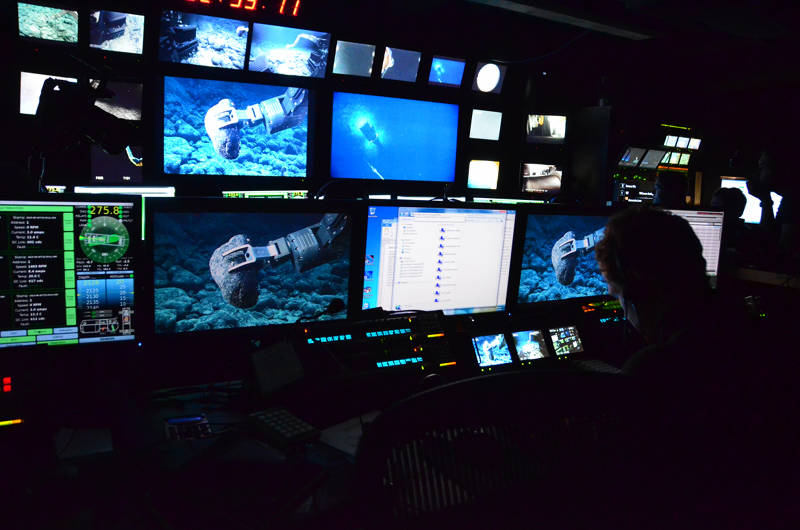We conducted our first ROV dive of the expedition today on the southeast rift zone of a seamount east of Necker Island (Mokumanamana). The primary objective of the dive was to determine the lower depth range of a deep-sea coral and sponge community found in 2003 during a Pisces submersible dive. The dive started on a flat terrace 2,220 meters deep and explored a steep slope on the rift zone up to a final target depth just below the previously explored community. The bottom was on a slope with rubble and as the ROV moved upslope, numerous pillow basalts were observed. At these deeper depths, very few animals were observed and included gorgonians (isidids, primnoids), hexactinellid sponges, anemones, black corals, eels, and shrimp. At a depth of 2,050 meters, the density of benthic animals increased substantially, with high densities of isidids, primnoids, sponges, as well as occasional crinoids. While the location of the end of the dive did not quite reach the position of the previous submersible dive conducted in this area (1,720 meters), the high densities of animals observed during today’s dive suggest that a dense coral and sponge community extends until depths of at least 2,050 meters in this area.
